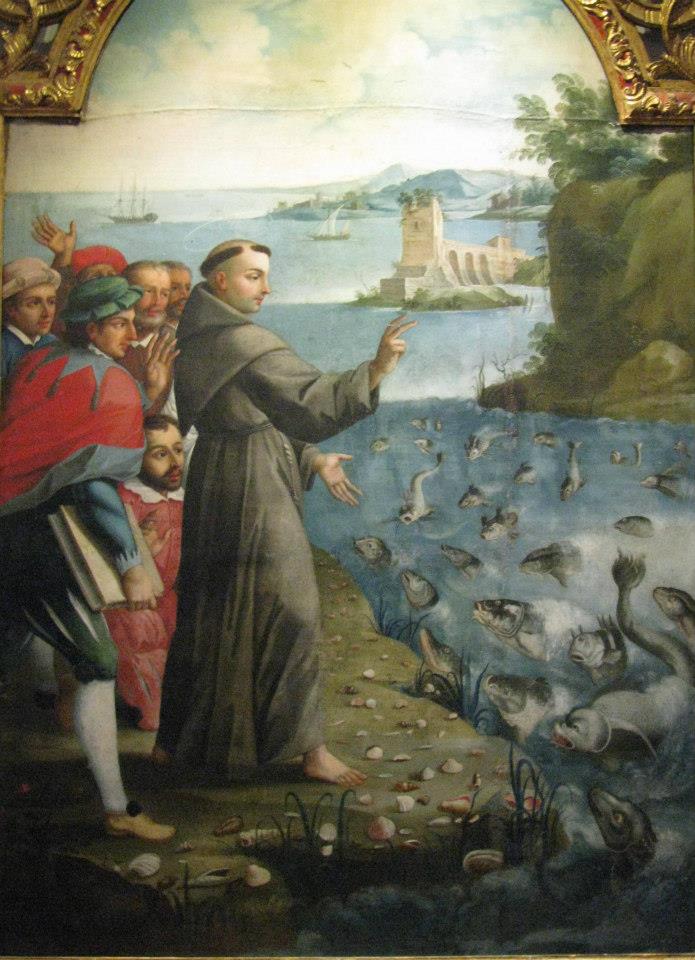(The following is excerpted from "150 North American Martyrs You Should Know," by Brian O'Neel. 26 September is the feast day of the Jesuit North American Martyrs.)
"...The Iroquois established a trade blockade on the St. Lawrence River. It was a failed attempt to run the blockade that led to the August 2, 1642, capture of Fr. [Saint Isaac] Jogues and Dr. René Goupil, a Jesuit
donné (volunteer missionary), as well as their Huron allies...[Goupil] had entered a Jesuit seminary as a young adult but eventually left because of poor health. He went on to obtain a degree in medicine and became a surgeon...."
"Fr. Jogues could have escaped, but when he saw the Indians had captured Goupil, he could not in good conscience leave. and a layman named Guillaume Couture rejected an opportunity to escape because he did not want to leave Fr. Jogues....The Iroquois made everyone strip naked. Then each prisoner had to run a gauntlet, in which a hundred people on each side -- armed with clubs, spiked whips, and fists -- pummeled them. The three Frenchmen got the worst of it."
"The next day the Indians began a forced march of the captives, covering two hundred miles in twelve days. As they staggered along, Fr. Jogues and Dr. Goupil catechized people and baptized those who were willing. The Indians killed one man named Ondouterraon the moment Father finished baptizing him....The natives then placed the prisoners on the stage found in every Iroquois village. Tribe members wrenched out their fingernails with their teeth, stabbed them, and disfigured their fingers. An Indian man forced a Christian woman to bite off Father's left thumb. The natives burned his left index finger and so severely mangled the rest of his digits that even after healing they were a gnarled mess...."
"For the length of his captivity, Dr. Goupil -- whom St. Isaac had initiated as a Jesuit novice shortly after their capture -- baptized terminally ill children. Knowing nothing of disease or medicine, however, the Indians believed that the Sign of the Cross hexed their offspring and caused their deaths. One such instance brought about René's martyrdom."
"An old man caught the doctor crossing his grandson's forehead. This gentleman believed the doctor had called an evil spirit upon the child and that harms would thus befall the boy. The man told his nephew to kill the doctor....The aforementioned nephew smashed a tomahawk into the doctor's head. Goupil collapsed, repeating Jesus's [N]ame with his last breaths. Fr. Jogues immediately knelt down, bemt his head toward Goupil's, and granted him final absolution. He continued kneeling in anticipation of his own death blow, but it never came...."
"A year after his capture, the [Indians] made Jogues a manservant on a fishing trip. His party entered a Dutch village for provisions, and the
burgemeester offered to help Father escape. Father asked for the night to pray about it, to which the puzzled mayor replied, yes, by all means, pray. Fr. Jogues only accepted the offer after determining that his leaving wouldn't adversely affect the enslaved Huron Christians...."
"[Jogues] departed for Europe, landing in England on Christmas Eve [1643]. The next day a ship deposited him on French soil....In April 1644, Jogues returned to New France. For two years he stayed at Montreal, helping found that city....he left for the [Iroquois village of] Ossernenon on September 24, 1646 accompanied by the
donné Jean de Lalande. He did not believe he would come back. He was proved correct in this....Upon reaching Ossernenon on October 17, the [Indians] captured and stripped Fr. Jogues, de Lalande, and the [French] envoy. The next day, Jogues...was invited to dinner....As Fr. Jogues bent to enter the longhouse of his putative host, a tomahawk split his skull...unlike his first stay with the Iroquouis, he experienced no torture but rather instantaneous death."
"His killers dumped his body in the middle of the village...[de Lalande] felt compelled to attempt a look at Jogues's body. Lalande stuck his head outside the house, and down came some brave's ax, immediately killing him. The [Indians] placed both saints' heads on pikes along the village walls and dumped their bodies into the river."








